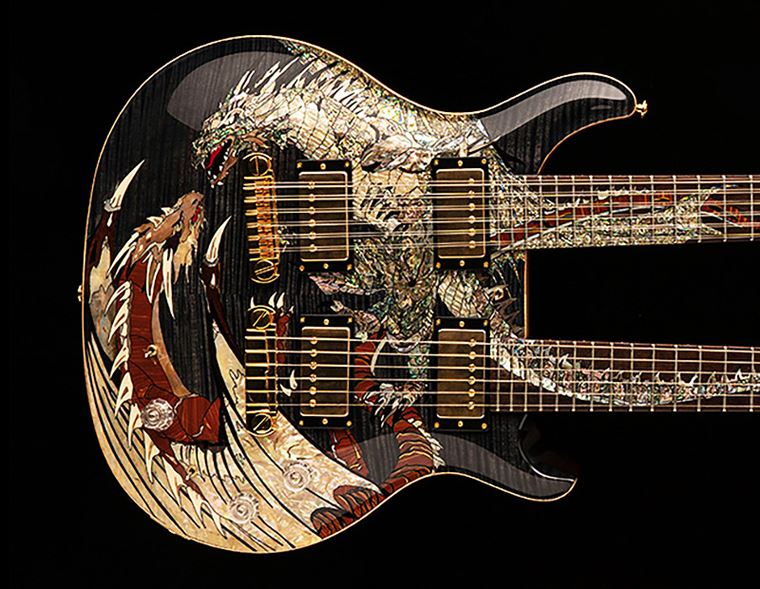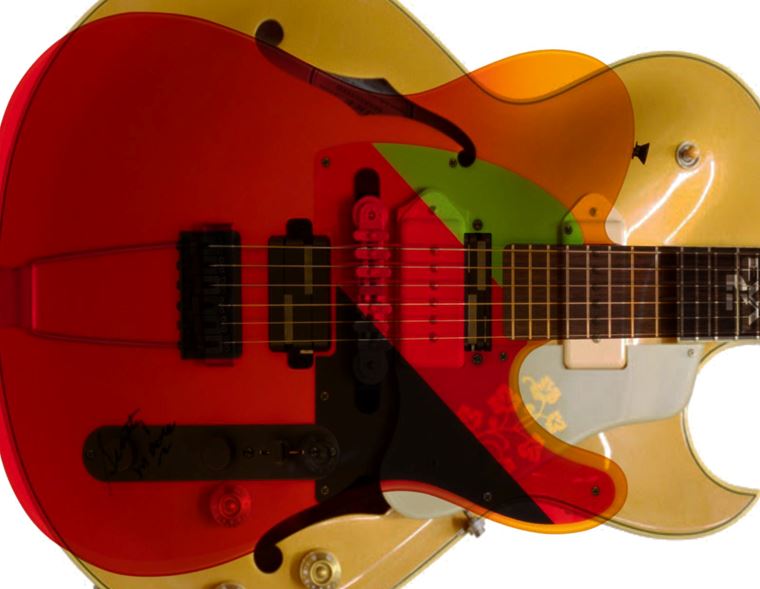Cousins Of The Guitar
Published on 15 February 2023
The weird and wonderful world of stringed and fretted instruments related to guitar doesn’t just stop at those that have the word guitar in their name. There is a whole lot more to it than this when we dive into the world of the folk section. Let’s take a closer look at those most popular cousins of the guitar - and this article will still only scratch the surface!
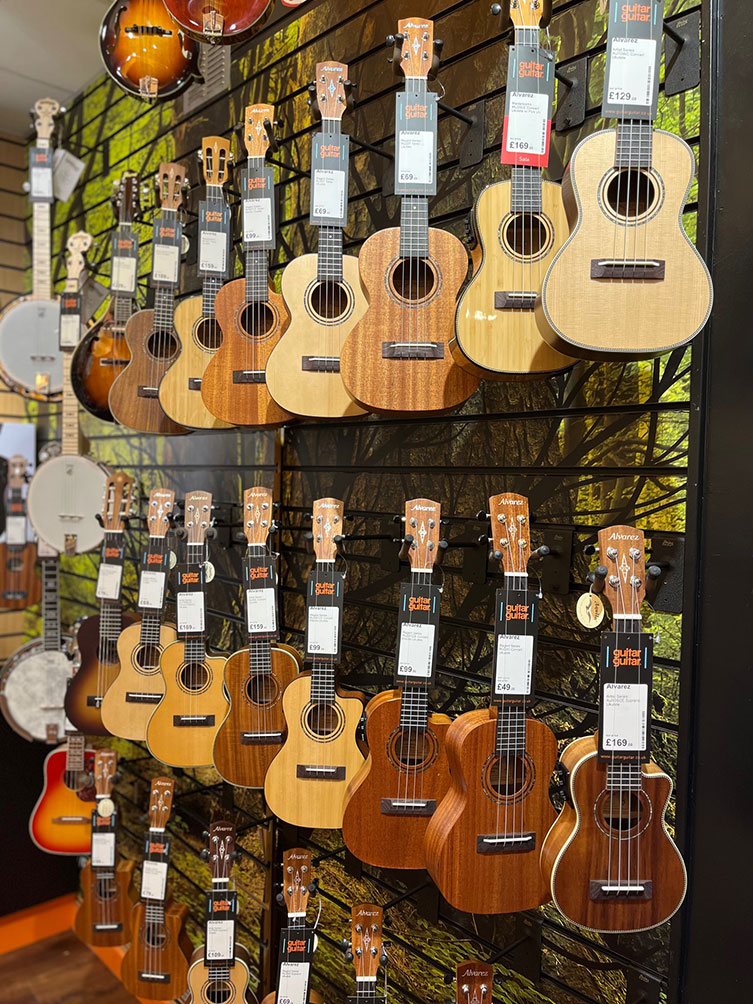
Mandolin
The mandolin is a small wooden instrument in the lute family, just like guitar. It originated in Italy as a classical instrument. Its tuning, GDAE, is exactly the same as that of a violin which made it an easy second option for many composers, including the likes of Vivaldi. A mandolin has 8 steel strings: 4 pairs, each tuned in unison. Due to its skinny fretboard and narrow distance between strings, mandolin is plucked with a soft nylon plectrum for best results. The 19th century brought a huge popularity to the mandolin in classical music. There are essentially three types of mandolins: classical (Italian) with a bowl-back, a Celtic one and a Bluegrass one.
The Celtic mandolin, also called the A-style mandolin, has a tear-drop shape and a flat back and top. These sound very lively with lots of jangle and full sustain, making them the perfect choice for traditional folk musicians.
The Bluegrass or F-style mandolin has a characteristic ornamental scroll in its upper bass side of the body, often matched with an equally ornate headstock. Aside from the aesthetic function, the scroll actually helps balance out the mandolin, making it easier to play while standing up.
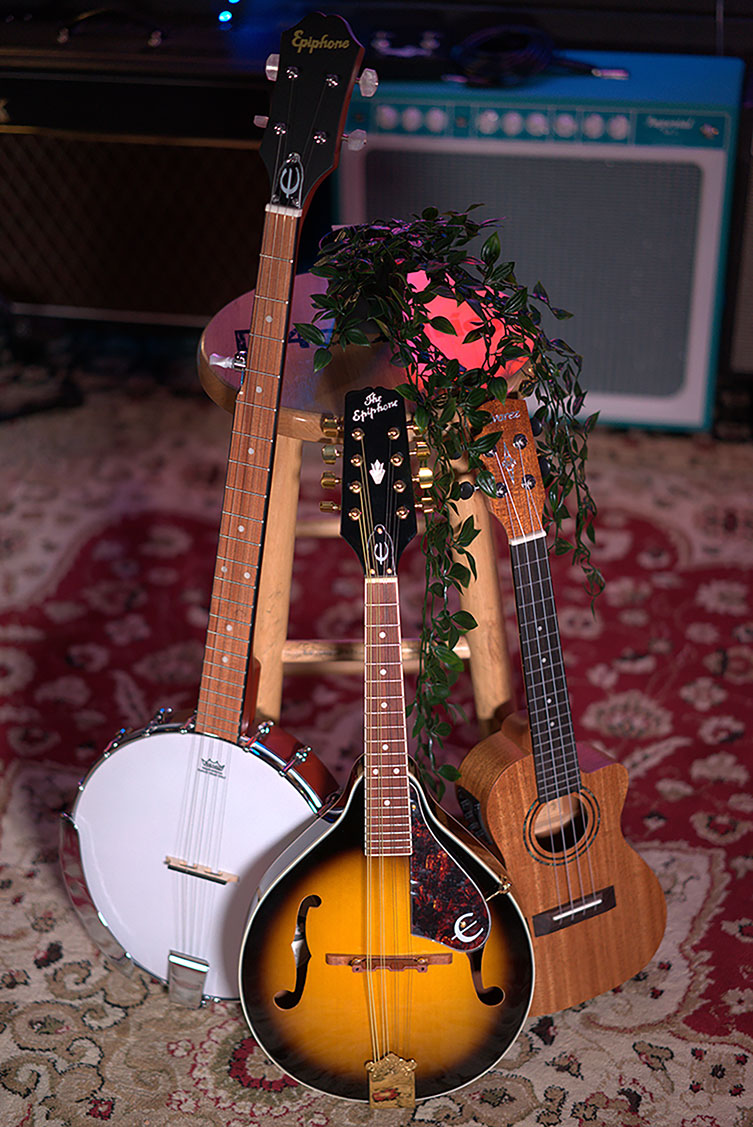
Both, the Celtic and the Bluegrass mandolins use the same gauge of mandolin strings are tuned to the standard GDAE tuning, and come with either round/oval soundhole or F-holes on sides. Although their shape does not exactly resemble that of a guitar, they're still guitar family instruments!
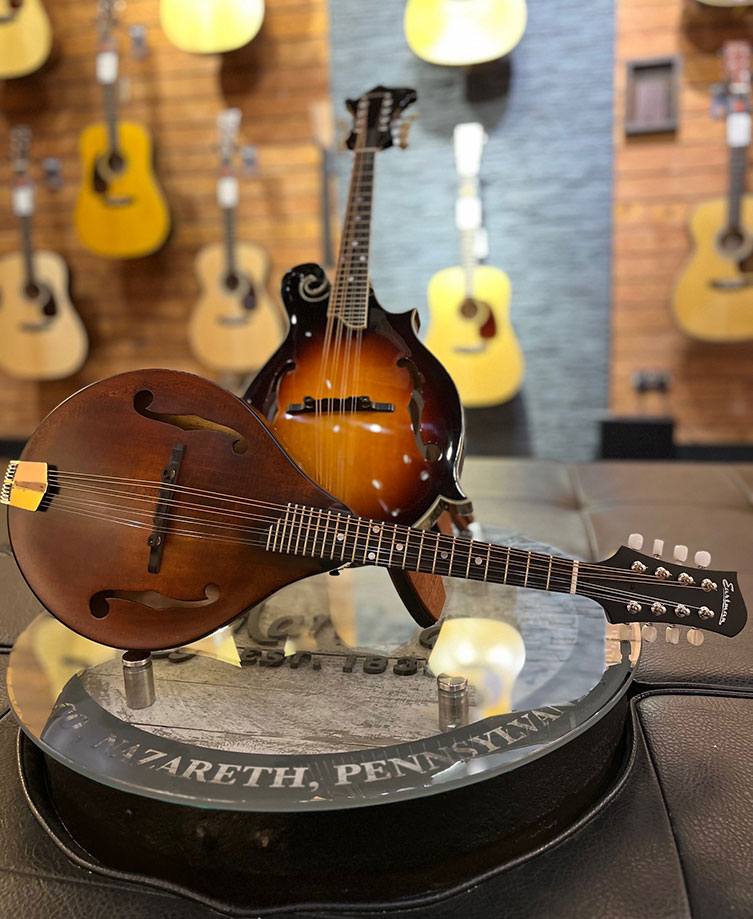
Who is a mandolin for?
A mandolin can be a great second instrument for someone who already plays the fiddle since it’s tuned in the same pitch. The mandolin also makes a perfect choice of a first instrument for a total beginner due to its small fretboard. Chords are relatively easy to learn for an untrained hand, compared to a guitar for instance.
Mandolin works magic as a lead melody instrument when plucked, simultaneously being a very lively instrument when chords are strummed and mixed in the rhythm section within a band. A mandolin is certainly a fantastic instrument for any folk musician!
Banjo
A banjo is a stringed instrument with a membrane stretched over a round body frame (or ‘pot’) to form a resonator. The head (membrane) was traditionally made of animal skin although nowadays it is mostly replaced by various synthetic materials. Many banjos have a metal tone ring around the rim which helps with clarity and sound projection. The modern banjo as we know it, was first used as far back as the 17th Century in North America and the Caribbean.

A banjo is played in a fast, arpeggiated motion. Depending on the style, it is plucked either with bare fingers, a plectrum or thumbpick and fingerpicks.
There are many types of banjos on the modern market but today we’ll look at the 4 most popular types.
5-string banjo
Most prominently used in Old-time Americana, bluegrass and country, the 5-string banjo settled well into the landscape of Appalachian folklore. The 5-string banjo has a shorter fifth string and therefore uses a reentrant tuning (the pitches don’t follow the order of low to high tuning across the fretboard).
Players who chose the 5-string banjo can use many tunings, with open G being the most popular choice. An open-back banjo is preferred for old-time Americana with clawhammer (or frailing) being the go-to technique. Open-back banjo has a harsher, more percussive sound. Bluegrass musicians tend to prefer to use the closed-back models for warmer sound and metal or plastic finger picks and a thumbpick to pluck melodies with.
4-string banjo
The 4-string banjo is often referred to as the plectrum banjo. As the name suggests, it comes strung with 4 strings - usually tuned to C G B D - and it’s played with soft plectrum rather than finger / fingerpicks. The 4-string banjo has 22 frets, similarly to the 5-string banjo, and it is commonly used for chordal accompaniment in jazz, popular music or for plucking melodies by some traditional folk musicians.
Irish Tenor banjo
The Irish tenor (or Gaelic tenor) model is a 4-string banjo with 17 frets (short scale) or 19 frets. It is relatively smaller than its 5-string brother. The tenor banjo became popularised in the early 20th Century by Irish musicians who used the mandolin/fiddle tuning - just an octave lower - in order to follow lead melodies of jigs and reels. Tenor banjo is therefore tuned in GDAE and plucked with soft nylon plectrum with triplet ornaments being the most characteristic technique used by its the players.
When choosing either of the two types of a 4-string banjo, make sure you select the correct type or banjo strings! The gauge and the tension of the plectrum banjo strings will vary from that of the Irish tenor banjo strings.
6-string
Although it’s quite a modern invention and not favoured by traditionaists, the 6-string banjo has found its righteous place in the modern market. It is meant to combine the design and sound of a banjo with tuning of a guitar. The 6-string banjo is a guitar-like instrument and a go-to choice for many guitarists who don’t need to adjust their fingering techniques in order to achieve a banjo sound. The 6-string banjo is tuned to EADGBE and you can simply play it like guitar!
Who is a banjo for?
Depending on what genre of music you’re wanting to play, a banjo can be a very inspiring instrument to add to your repertoire. If you already play a guitar, a guitar's cousin should come relatively easy to learn! You may need to take some time to adjust your fingers to a slimmer fretboard and learn a few new techniques. If you’re a complete beginner and are not sure which one to go for, the simple advice would be to choose either of the 4-string banjos if you like your Celtic folk and go for the 5-string model if Bluegrass is closer to your heart.
Bouzouki
Another addition of the lute family, a bouzouki is a long-necked fretted instrument with a teardrop-shaped body. There are two distinguished types of a modern bouzouki: the trichordo, which has three pairs of strings, and the tetrachordo - with 4 pairs of strings. The strings are steel and techniques used to play include standard chord strumming for accompaniment or plucking melody lines with plectrum. The bouzouki has a very resonant, sharp and textured, chorus-like sound.
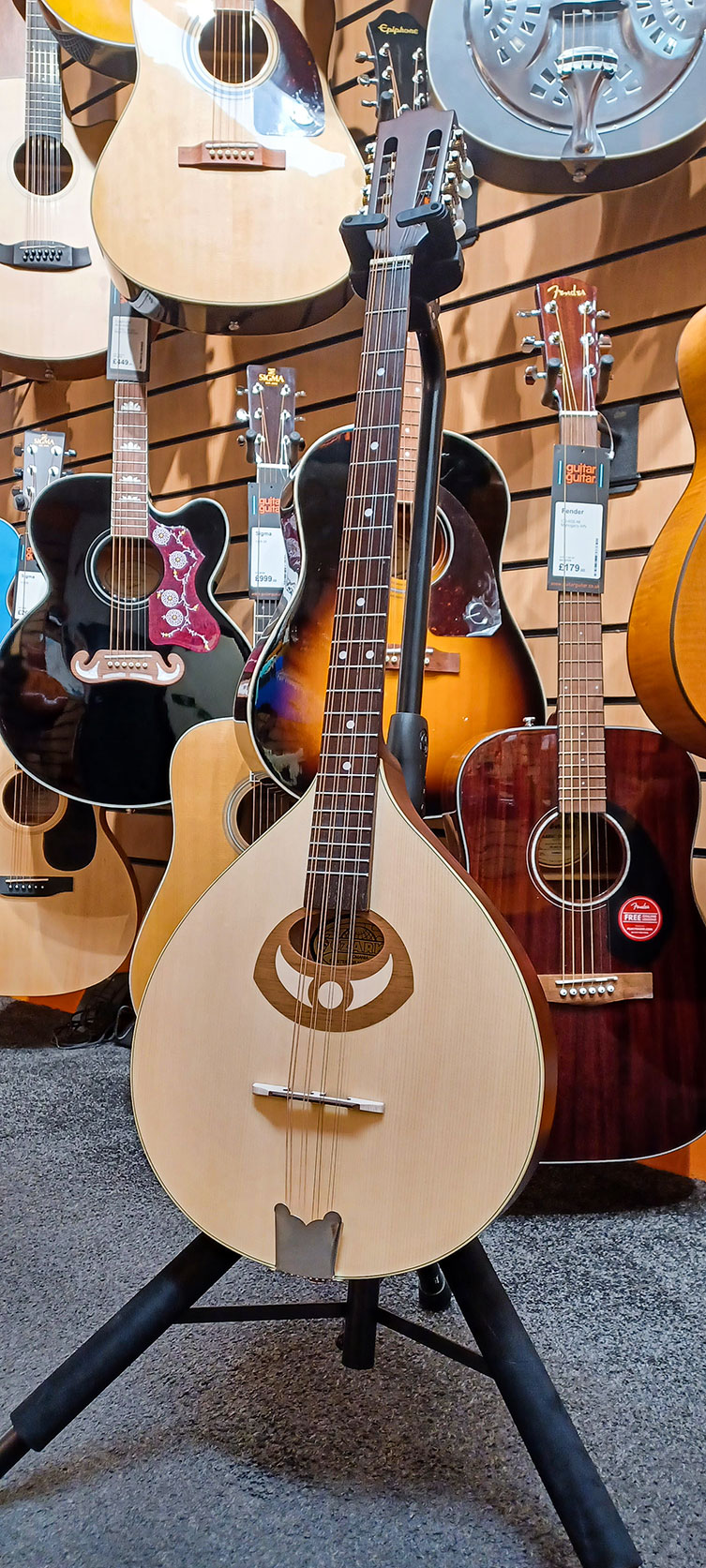
The bouzouki is of Greek origin and it is widely used within the traditional Greek folk music. Introduced into Irish traditional music in the 1960s, the tetrachordo (4 courses of strings) model found its perfect place within the traditional folk sound of the Celtic music landscape.
Who is a bouzouki for?
Whether it's the Greek or Irish bouzouki, this instrument is a perfect choice for somebody whose musical interests are heavily focused on traditional folk. If you already play any of the string and fretted instruments, learning a bouzouki will come fairly easily. Yet nothing stops you if you’re a complete beginner and that’s the sound you’re after!
Ukulele
A ukulele (or a ‘uke’) is a very small wooden instrument of the lute family, resembling a miniature acoustic guitar. It originated in Portugal and has been widely popularised in Polynesian folk music, particularly in Hawaii. A typical ukulele has 4 nylon strings tuned to the reentrant tuning of high G: g-C-E-A (a reentrant tuning means the strings are not tuned in ascending or descending order but employ a higher or lower octave).
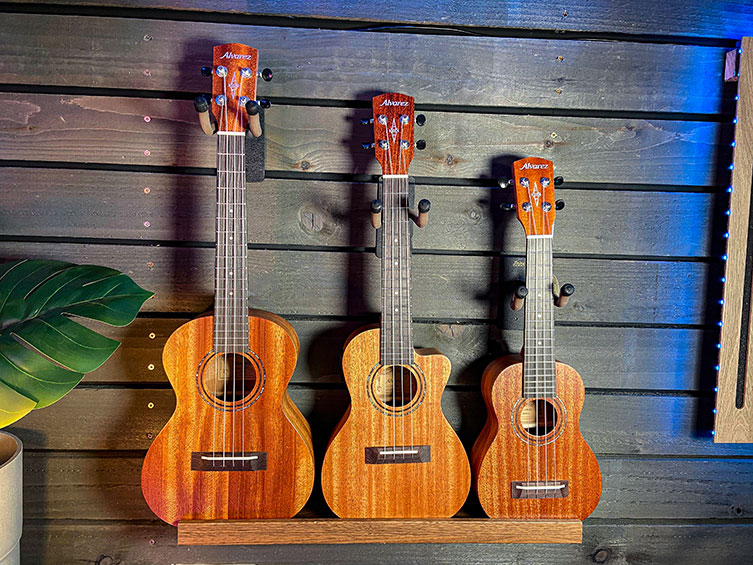
As with most small-sized instruments, ukulele has a vibrant high-pitch tone and almost a ‘happy’ sounding tone! Certainly the cutest of the guitar family instruments. The ukulele is widely used in music therapy due to its accessibility, affordability and ease of learning. Its cheerful tone is known to evoke endorphins and lift mood.
There are 4 common sizes of a ukulele: soprano (the smallest), concert, tenor and a baritone (the largest). The tuning remains the same aside from the baritone where the strings are in DGBE. There is also a bass ukulele and each of the sizes are available in a cutaway or non-cutaway version. Modern market offers electro-acoustic ukuleles ready to gig and record with!
Who is a ukulele for?
For you! Honestly, virtually anybody can play a ukulele. It is great for children, and the elderly; for beginners and professionals alike. It’s one of the most affordable stringed instruments on the market (prices starting at as little as £29.99!) yet professional players have an array of boutique brands to choose from, too. It’s light, comfortable and whether you want to strum chords or play intricate melody lines, it will sound great.
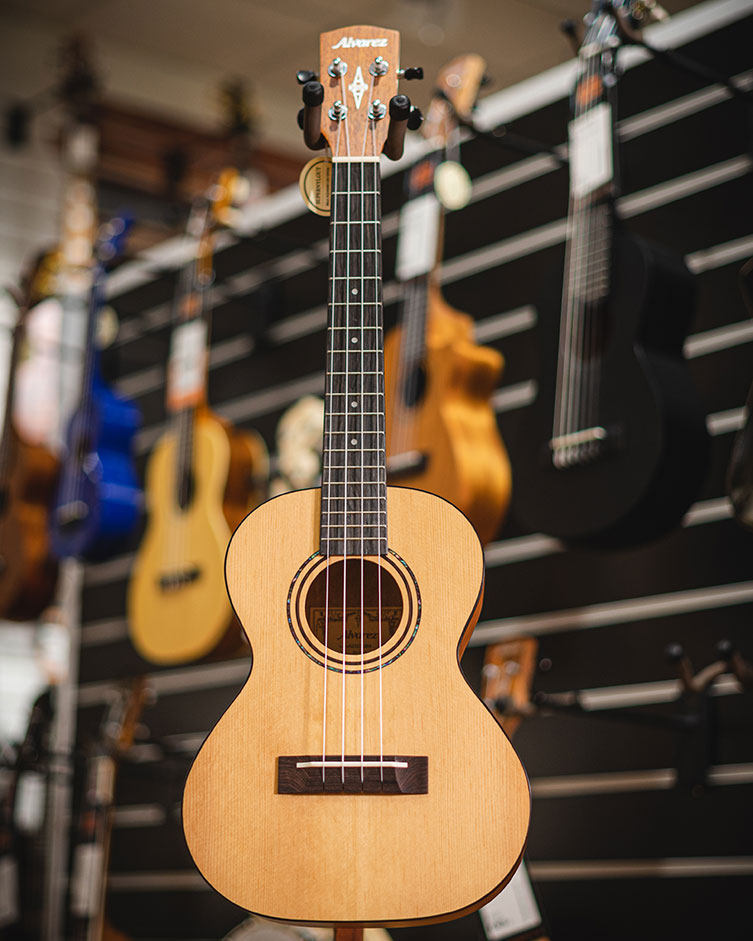
Appalachian Dulcimer
The Appalachian dulcimer is a four-string fretted instrument of the zither family. It’s typically made of spruce with four f-shaped sound holes. Its body resembles a narrow hourglass and the strings run centrally along the dulcimer’s entire body length. Not to be mistaken with the traditional hammered dulcimer which is an instrument of entirely different kind!
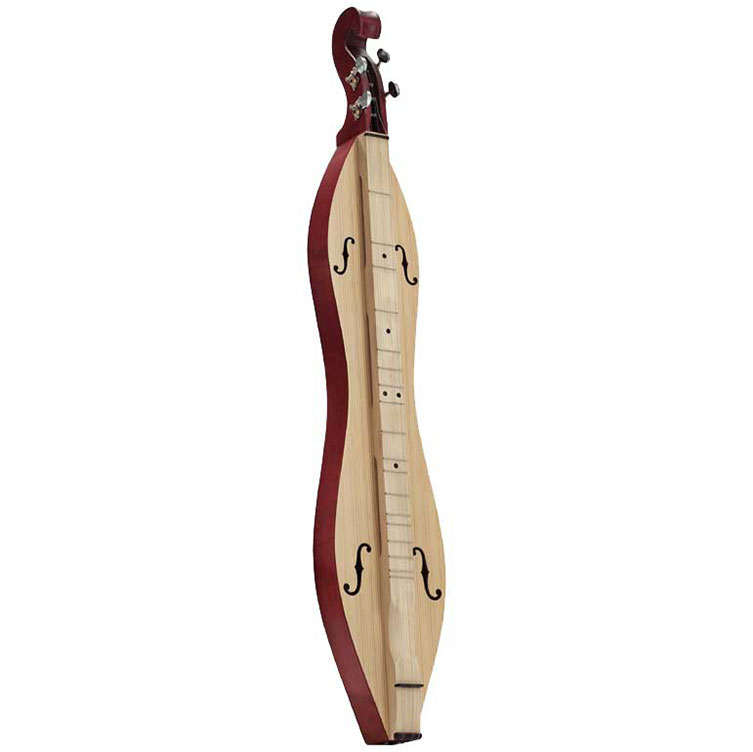
The origins of the Appalachian dulcimer are speculative. It is believed that the first Appalachian dulcimers were made by the early 19th Century Scottish and Irish settlers of the Appalachian mountains as they were unable to make their traditional violin due to lack of tools.
This traditional instrument can be used in many different styles of music. It is played horizontally, placed on the musician's lap. You can strum it with a plectrum or fingers. The most popular tuning for the Appalachian dulcimer is DD-A-D.
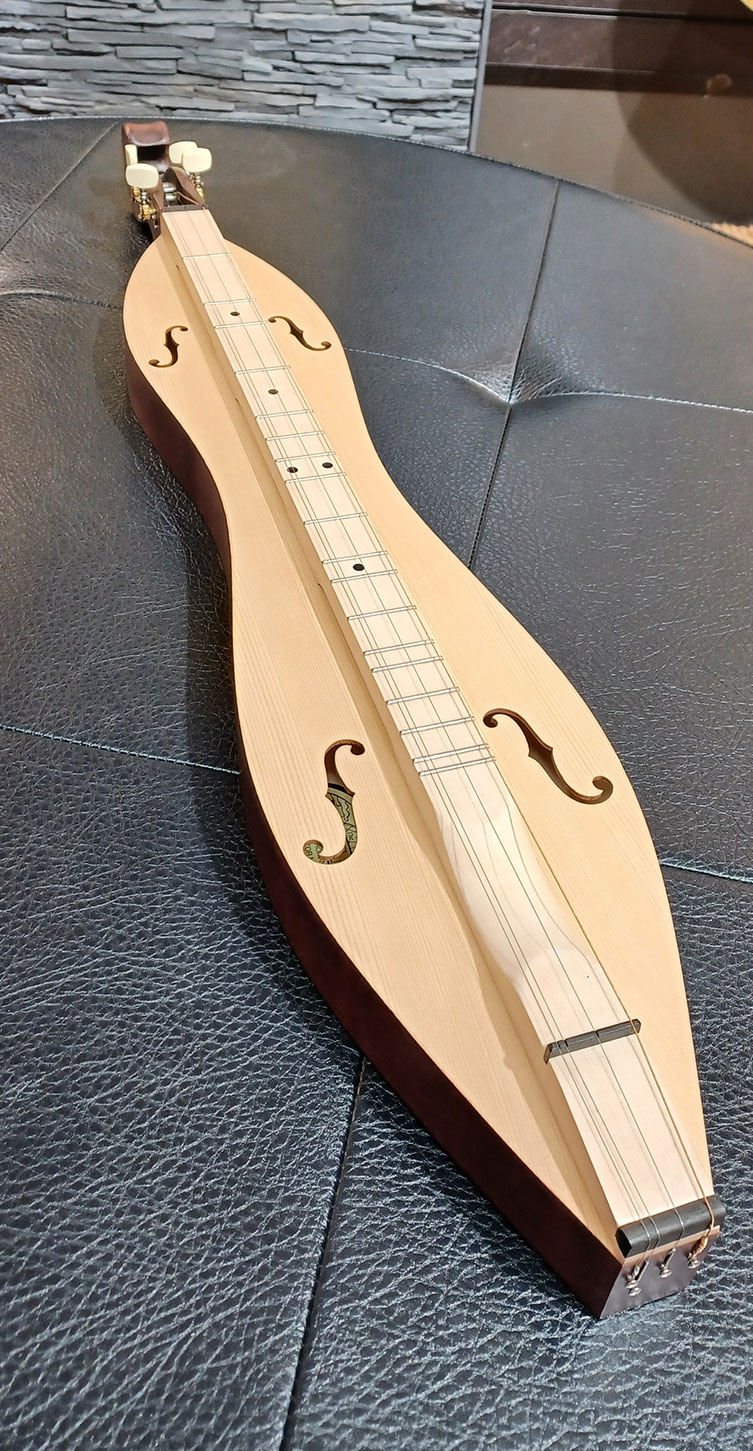
Who is an Appalachian dulcimer for?
Due to its diatonic nature, the Appalachian Dulcimer can be a very good first instrument for a musical beginner but also a great fun for a professional musician looking to expand their multi-instrumentalist status.The Appalachian dulcimer has a very distinctive sound and would make for a great addition to any traditional folk or bluegrass repertoire.
Final thoughts
There is a plethora of guitar family instruments out there in the world and here at guitarguitar we always encourage you to try something new! You can browse our folk section online and if you feel like you're stuck for ideas or find yourself in need for more in depth answers, don't hesitate to reach out to us on Live Chat, phone or pop into your nearest guitarguitar store!
Looking for more inspiration? Check out our blog on artists who use folk instruments in their songs and get your ideas flowing!






